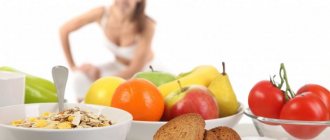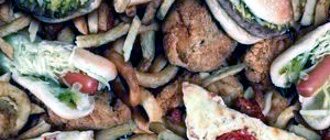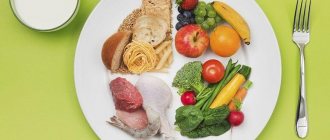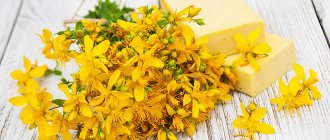The diet for liver cirrhosis and the menu created based on its patterns are one of the important points of treatment that should be paid close attention to. Thus, if you follow certain dietary recommendations, it is possible to improve the quality of life, reduce the severity of symptoms of liver cirrhosis, and also achieve better control over the course of the disease.
The basis of diet therapy is the use of treatment table number 5, created by Manuil Isaakovich Pevzner, one of the founders of therapeutic nutrition.
General recommendations for therapeutic nutrition
In case of pathologies of the hepatobiliary system, it is important to maintain the supply of microelements, vitamins and other nutrients. This disease disrupts digestive function as it is accompanied by the death of hepatocytes. An important organ ceases to adequately cope with its task, and long-term treatment is required.
Therapeutic diet No. 5 for liver cirrhosis helps reduce the load on the affected organ, alleviating the condition. The diet is not too restrictive and does not create stress for the body.
Following diet number 5, it is recommended:
- eat a balanced and fractional diet - you need to consume at least 2500 calories per day, taking food in small portions;
- exclude the intake of cold and very hot food - it must correspond to the temperature of the human body;
- hard and coarse food should be consumed pureed; it will be good to prepare various pureed soups;
- do not eat fried, smoked, canned food;
- reduce salt intake, maximum – 1.5 tsp. in a day;
- Stewed, boiled, baked, steamed dishes are recommended.
To remove toxic substances from the liver, hepatologists recommend doing unloading. This is a period when you can only eat lean soups, garden vegetables, dairy products and fruits, drink clean water and healthy drinks.
Calorie content and balance of BZHU
Nutrition for liver cirrhosis requires strict adherence to the balance of protein, fat, carbohydrates. Regarding calorie content, the daily requirement is from 2500 to 2900 kcal.
If you have cirrhosis, you need to drink at least 1500 ml of water per day. You can't drink it with food. Drink clean water between meals.
The diet involves increasing protein intake and reducing fat intake. The latter must be reduced by at least 30%. This approach to nutrition will reduce the load on the gastrointestinal tract and hepatobiliary system.
How often and how much to eat
Following treatment table No. 5 for liver disorders, you need to eat often, 4-6 times, but in small portions. Small meals are recommended. Products should be softened very well. It is important to drink plenty of mineral or spring water.
Cooking
In case of cirrhosis, it is important to exclude food cooked in a frying pan and especially over an open fire. It is recommended to steam food. It is useful to eat boiled, stewed. You should not eat smoked or canned foods. It is also important to avoid fast food and dishes of unknown origin.
What products are prohibited
Alcohol is strictly prohibited while following the diet. It is the main destroyer of hepatocytes. If you ignore this recommendation, hepatitis will quickly develop into cirrhosis, and this disease can be fatal. The patient can only use medicinal tinctures based on alcohol, but after consulting a doctor.
Flour products and yeast-based bread are prohibited. Such products impair digestion and contain fast carbohydrates, which negatively affect the patient’s condition. Baking also contains a lot of sugar, the consumption of which must be limited.
Strictly prohibited:
Spices
- fatty types of meat (pork, lamb, duck) and fish;
- any fried foods, grilled foods, or baked foods with a crust;
- sour vegetables;
- garlic and onions (the latter is permissible only boiled in diet number 5);
- any spices;
- artificial colors and flavor enhancers;
- products with a large proportion of animal protein (more than 45 g per day);
- sports supplements;
- strong drinks containing caffeine;
- soda;
- broths based on meat, mushrooms and fish;
- chocolate and any products containing cocoa;
- sausages and frankfurters, except dairy;
- culinary additives;
- fatty dairy products;
- boiled and fried eggs.
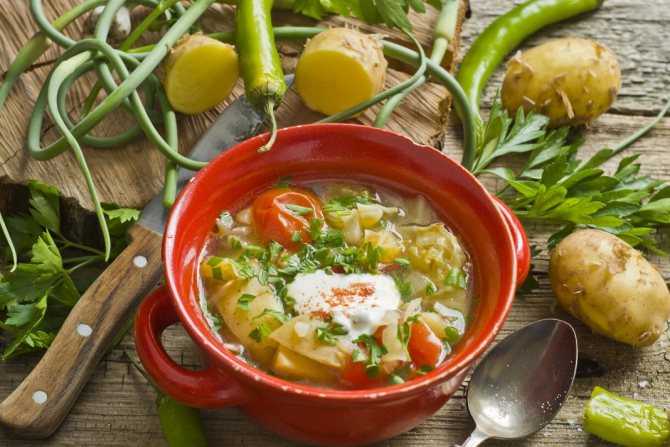
Since you cannot eat cold foods, summer vegetable soups and okroshka, ice cream, and drinks with ice are prohibited. Do not drink hot tea or coffee, or heat the food you eat too much. If the food is prepared in advance and stored in the refrigerator, then you can bring it to room temperature by simply leaving it on the table for a while. Using an oven or frying pan to reheat already cooked food is dangerous, as it can lead to the formation of a harmful crust.
It is not recommended to visit public catering establishments. The patient cannot know exactly how much salt and sugar is added to dishes. Only in some establishments you can ask the chef to prepare food individually. Restaurant food is also dangerous because the products are heavily seasoned with prohibited spices.
What you can and cannot eat with liver cirrhosis: food lists
Useful foods for cirrhosis are presented in the following list:
- milk and fermented milk dishes;
- dried rolls (it is better to make crackers from fresh white bread);
- lean meats, especially chicken breast;
- baked vegetables;
- drinks – fruit teas, rosehip decoction;
- berries in raw natural form;
- sour cream sauces, cottage cheese;
- lean lamb, turkey meat (preferably in the form of cutlets);
- steamed and baked omelettes, side dishes;
- porridge with milk and water (wheat is easiest for the liver);
- honey, sugar, marshmallows, jams, jellies;
- a little milk chocolate;
- refined oils in their natural form;
- sweet (in no case sour) fruits, dried and grated.
Healthy, that is, allowed, foods for damaged livers should be eaten exclusively warm.
Prohibited products:
- pork, sausages;
- any alcohol, coffee, energy drinks;
- fatty fish;
- canned food;
- sour berries and fruits;
- mustard, radish, horseradish, spinach;
- ice cream, fermented baked milk, cream;
- brains, liver, heart;
- cream cakes, chocolate.
Following the rules of the treatment table for liver diseases, it is important to categorically refuse alcohol, including low-alcohol drinks.
What is liver cirrhosis and why does this disease haunt people?
The liver is a natural filter for the entire body. If an organ fails, then all organs begin to suffer. Cirrhosis is a condition in which fibrosis develops, resulting in abnormal regeneration nodules instead of the normal architecture of the liver. In fact, this is the final stage for many liver pathologies.
In the world, this disease ranks first among all causes of death. The disease develops against the background of alcohol dependence and the presence of hepatitis C. Less commonly, the cause is hepatitis B, which is most often found in Africa and Asia. There is also cirrhosis of unknown etiology. Clogged bile ducts can lead to the development of pathology.
There are three stages of the disease. The first or initial is characterized by minimal symptoms. The second stage is already characterized by serious clinical manifestations. The latter or thermal are already irreversible processes in the body that inevitably lead to death.
Despite the severity of the disease, dietary nutrition plays an important role in therapy. Most often, dietary table No. 5 is prescribed. Nutrition involves a diet enriched with vitamins; food products should have minimal negative effects on organs, especially the liver. Along with this, physiotherapy is prescribed, for example, plasmaphoresis, diathermy.
Features of diet No. 5
The key principle of table No. 5 for women and men is limiting fat intake. Normally, their quantity should not exceed 80 g, of which 30% are vegetable. Proteins should be up to 80 g, half of which are animal. Carbohydrates should enter the body no more than 400 g.
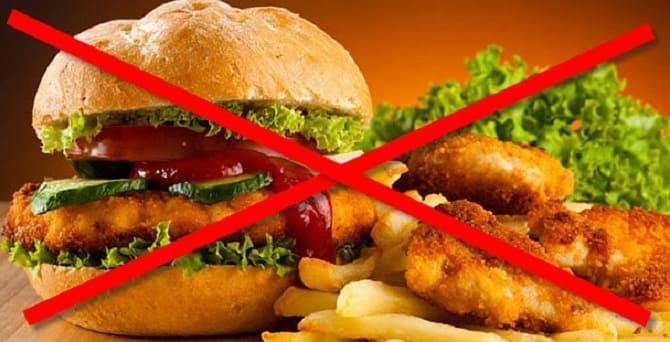
Chocolate, mushrooms, margarine, tomatoes, cakes, sugar substitutes, chips, fast food, processed cheese, packaged juices, cakes, coffee, black tea are prohibited.
The main goal of table No. 5 is to change nutrition to achieve a liver-friendly diet. A proper diet reduces stress by improving the functions of the hepatobiliary system, the production and outflow of bile. As a result, digestion improves.
With ascites
A diet for cirrhosis against the background of ascites, when fluid accumulates in the peritoneum, involves reducing the amount of water and salt. The purpose of the therapeutic diet will be to remove fluid. The best option would be to completely avoid salt without compromising your water balance.
For liver cancer
If you have cirrhosis that has caused cancer, you should eat a varied diet so that the body can easily absorb all the beneficial elements. With such a serious condition, you can eat various soups, seafood, wholemeal bread, cottage cheese, cheeses, nuts, cereals, and white meat.
For drinks, you should give preference to herbal infusions, teas, clean water, and milk in moderation.
The basic principles of a diet for oncology are naturalness, benefit and completeness.
At stage 4
For patients with liver cirrhosis at the last stage, the most gentle nutrition is required. It is acceptable to eat fresh vegetables from the garden, dairy products, natural honey, berries and non-acidic fruits.
Boiled and baked, you can eat cereals, pumpkin, vegetables, veal, chicken, beef, lean fish, and cereals. With restrictions, it is permissible to eat dietary sausages, eggs (no more than two per day), and butter.
Important rules for the last stage of liver cirrhosis:
- hunger cannot be ignored, you should eat in small quantities, but often, at least 4 times a day;
- eat raw foods first, then processed foods;
- Chew thoroughly.
An important condition for a proper diet is drinking regime. It is recommended to drink fresh juices, compotes, mineral waters, and green teas. At stage 4, decoctions of rosehip and corn silk are especially recommended.
It is important to pay attention to the preparation of dishes. There is no need to use a lot of salt and various seasonings during the cooking process. Refined sugar is removed from the diet.
Composition of the daily diet and basic rules
The daily dietary menu according to diet No. 5 according to Pevzner must necessarily include the following daily components:
- Proteins – 100-120 grams, at least 50% should be animal proteins;
- Fats – 50 grams vegetable oil, 40 grams low-fat butter;
- Carbohydrates – no more than 450 grams;
- Sugar – no more than 60-70 grams per day;
- Calorie content – 2900 – 3500 kcal;
- Salt – no more than 10 grams, in case of severe edema it is completely excluded;
- Liquid – from 1.5-2 liters, depending on swelling.
Dietary food table No. 5 according to Pevzner is compiled in accordance with various diseases of the gastrointestinal tract, cirrhosis, chronic hepatitis, pancreatitis, cholecystitis. Only in the case of the stage of decompensatory cirrhosis, the attending gastroenterologist and nutritionist make possible nutritional adjustments.
Treatment table rules No. 5
- Maintaining normal consumption of foods with carbohydrate content;
- Fat consumption is significantly reduced and depends on the condition of the patient with cirrhosis at the time of prescription of the diet;
- For a better choleretic effect, the outflow of bile in cases of constipation, the intake of vegetable oil is increased, which is added to dishes that contain a lot of fiber;
- The diet provides the required amount of protein foods and amino acids;
- To facilitate and relieve the liver of processing products entering the body, all products must be carefully processed and prepared according to the recipe for boiled, steamed dishes, well chopped and, if necessary, pureed;
- Nutrition for cirrhosis and other diseases of the gastrointestinal tract is carried out in small quantities, calculated for one meal, for 5-6 times a day in order to improve bile secretion, digestion, assimilation of food and improve the functioning of intestinal motility.
Mandatory foods in diet No. 5
- Rosehip decoction, fresh fruit juices not from sour fruits, fresh not sour berries, sometimes you can drink coffee with milk;
- Kissel, compote, uzvar, berry jam, honey;
- The diet includes milk, cottage cheese, hard cheese, sour cream with a low fat content in all of the listed products;
- Protein omelet of two whites per day, or one boiled egg;
- Various porridges (legumes are excluded) in crumbly form, casserole; Vegetables and fruits are recommended to be consumed fresh, without prior freezing or preservation;
- Zucchini, carrots, red cabbage, salads with the addition of vegetable oil are prepared in a double boiler, steamed or boiled;
- 40 grams of butter and 50 grams of vegetable oil can be added to various vegetable dishes without prior cooking;
- Dishes from fish, poultry, in pieces or in the form of minced meat, always non-fatty varieties; Vegetarian soups, beetroot soup, summer borscht without frying;
- Milk soups, casseroles, lazy dumplings;
- Wheat, rye bread, bran bread, day-old bread, biscuits.
Foods that are excluded in diet No. 5
- Baking, ice cream, confectionery with cream, chocolate, sweets;
- Any carbonated drinks and alcohol;
- Onions, garlic, sorrel, sauerkraut, spinach, mushrooms in any form;
- Canned products, any smoked meats and fish, lard;
- Processed cheese and hard cheese containing more than 45% fat;
- Fried foods, especially with liquid smoke effect;
- Duck, goose, lamb, pork, horse meat, lamb;
- Any meat and fish broths;
- Catfish, flounder, silver carp, glossy fish, mackerel, capelin.
During the compensatory stage of cirrhosis, the patient is recommended to spend one fasting day per week, using low-fat cottage cheese or kefir at individual discretion.
600 grams of cottage cheese or a liter of kefir. In the case of a chosen curd fasting day, a decoction of rose hips is recommended, in small portions of 100-150 grams per serving, warm, 5-6 times. All drinks, soups, tea, coffee should only be at room temperature; avoid high temperatures of cooked foods.
Sample menu for a week for cirrhosis
The menu for cirrhosis is varied and tasty. You can change different dishes every day, but not contrary to the rules.
For breakfast during the week you can eat:
- boiled beef, yesterday's white bread;
- buckwheat porridge, juice;
- tea, milk;
- fruit salad;
- oatmeal with milk or water;
- soaked herring.
Breakfast should be hearty and contain most of your daily calories. Subsequent snacks can be light.
For lunch:
- cottage cheese with sugar and fruit (you can add honey);
- compote, fruit drink, jam;
- chicken meat;
- pilaf with mild seasoning;
- Apple pie;
- decoctions of chamomile, rosehip;
- mashed potatoes;
- kefir, oatmeal.
For dinner:
- kefir with white crackers;
- cottage cheese casserole;
- meat and chicken cutlets;
- salad with sour cream (cannot be seasoned with vinegar);
- bun with milk;
- compote with dried fruits;
- puree soup;
- weak tea, herbal decoction.
You can snack on white crackers, kefir, and fruit. You can also prepare puree soups and various cereals with milk.
Sometimes you can treat yourself to traditional dishes by eating borscht for lunch and cheesecakes for dinner. For primary biliary cirrhosis, the main thing is that the ingredients in their composition are permitted.
How to create a menu when you are sick?
An approximate menu for a week for liver cirrhosis will look like this:
1 day
- 7.00 - Omelette of 2 whites, savory rye bun with butter, tea with honey and lemon;
- 9.30 - Cottage cheese and berries, freshly squeezed juice;
- 12.00 — Vegetable soup, mashed potatoes, steamed beef cutlet, bread, tea with jam;
- 15.00 - A handful of dried fruits, oatmeal cookies;
- 18.00 - Vegetable casserole, cheese, bread, rosehip broth;
- A glass of kefir at night.
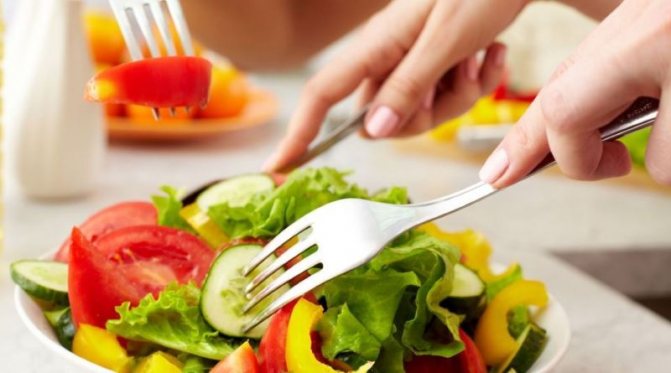
Day 2
- 7.00 - Oatmeal, cooked with butter, compote;
- 9.30 — Curd pudding, coffee with milk;
- 12.00 — Vegetable soup with vermicelli, buckwheat with butter, baked chicken breast, bread, tea with sugar;
- 15.00 - Cookies, juice;
- 18.00 - Semolina porridge, salad of boiled potatoes, carrots, beets, seasoned with vegetable oil, tea;
- A glass of kefir at night.
Day 3
- 7.00 — Steamed meat cutlets, carrot salad, juice;
- 9.30 - Baked apple;
- 12.00 — Milk soup with noodles, boiled chicken, rice, tea;
- 15.00 - Cookies, juice;
- 18.00 - Mashed potatoes, fish baked in foil, mineral water;
- A glass of kefir at night.
4 day
- 7.00 - Oatmeal, cottage cheese with sour cream;
- 9.30 — Applesauce, cookies;
- 12.00 - Potato soup, lazy cabbage rolls, oatmeal jelly;
- 15.00 - Fruits (pears);
- 18.00 - Rice porridge, tea, cheese;
- Before going to bed, a glass of kefir.

5 day
- 7.00 - Meat cutlets, buckwheat, tea with lemon;
- 9.30 - Dumplings with sour cream;
- 12.00 — Vegetable soup, stewed cabbage, baked fish, oatmeal jelly;
- 15.00 - Dried fruits, marmalade;
- 18.00 - Semolina porridge, juice;
- Before going to bed, a glass of kefir.
Day 6
- 7.00 - White omelette, savory rye bun with butter, tea;
- 9.30 - Baked apple;
- 12.00 — Cabbage soup cooked without meat, stewed vegetables, baked meat, dried fruit compote;
- 15.00 - A handful of dried fruits, oatmeal cookies, compote;
- 18.00 - Casserole of vegetables and minced meat, bread, rosehip decoction;
- Before going to bed, a glass of kefir.
Prognosis for life with liver cirrhosis
Conditions for later life and the survival of the human body depend on many factors, the degree and cause of the development of liver cirrhosis.
The easiest stage of this disease is considered to be the compensated and subcompensated stage with a positive prognosis for life, up to 20 years, and in exceptional cases, more. Hepatitis is one of the most dangerous enemies in terms of the incidence of liver cirrhosis, but it is curable if you consult a doctor in a timely manner, with effective treatment in conjunction with strict adherence to dietary nutrition.
Any drinks containing ethanol from light to strong drinks are subject to exclusion. Using non-carbonated drinks, you can help the liver digest food more easily, be sure to consult with your doctor, a gastroenterologist.
In case of biliary cirrhosis, milk thistle vegetable oil helps to improve and even completely establish bile secretion from the body; in severe cases, it adds up to 2-3 years of life after the illness.
A patient with a toxic effect on the liver in the compensated stage of the disease should not make dietary adjustments and prescribed medications himself.
Any of the drugs should be aimed at treating the liver, removing harmful toxins from it, and not adding drugs with toxic effects. Any infectious disease after completing a course of treatment for liver cirrhosis can cause a provocation for an outbreak of the inflammatory process in the liver, which can lead to the onset of development of biliary cirrhosis.
If the patient, before starting treatment for liver cirrhosis, worked at work involving paints, toxic substances, chlorine pesticides, pesticides, this work with harmful substances is stopped.
